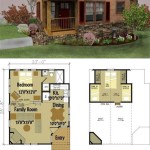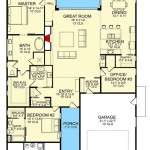Rustic Home Plans: Embracing Nature and Simplicity
Rustic home plans evoke a sense of warmth, comfort, and connection to the natural world. They often feature natural materials, open layouts, and a design aesthetic that prioritizes functionality and simplicity over elaborate ornamentation. These plans are increasingly popular for those seeking a retreat from the fast-paced modern world, a dwelling that fosters relaxation and a connection with the outdoors. This article will explore the defining characteristics of rustic home plans, showcasing examples and highlighting key considerations for those interested in building their own rustic haven.
The essence of rustic design lies in its celebration of natural elements and unrefined textures. This isn't about shying away from imperfections, but rather embracing them as integral to the character of the home. Exposed beams, rough-hewn wood, and natural stone are common features, adding to the overall sense of authenticity and grounding. The focus is on creating a space that feels both lived-in and timeless, a comfortable sanctuary that reflects the beauty of the surrounding landscape.
Key Elements of Rustic Home Design
Several key elements define the rustic aesthetic and contribute to the overall feeling of warmth and connection to nature. Understanding these elements is crucial in selecting or designing a rustic home plan that aligns with personal preferences.
Natural Materials: The cornerstone of rustic design is the extensive use of natural materials. Wood, stone, and metal are prevalent, often in their raw or minimally processed forms. For instance, hardwood flooring, ideally reclaimed or distressed, is a standard choice. Stone fireplaces, interior accent walls, and exterior cladding are also common. Wood beams, whether exposed in the ceiling or used as structural supports, contribute to the overall rustic charm. The emphasis is on showcasing the natural grain and texture of these materials, rather than concealing them beneath paint or varnish.
Open Floor Plans: Open floor plans are frequently incorporated into rustic homes to promote a sense of spaciousness and connectivity. This design approach allows for seamless transitions between living areas, kitchens, and dining rooms, encouraging interaction and fostering a communal atmosphere. The open layout also maximizes natural light, further enhancing the connection to the outdoors. Large windows and doors are typically included to provide ample views of the surrounding landscape and facilitate indoor-outdoor living.
Warm and Earthy Color Palettes: Rustic homes generally feature warm and earthy color palettes, drawing inspiration from the natural world. Browns, greens, grays, and creams are common choices, creating a sense of tranquility and harmony. These colors are often complemented by pops of bolder hues, such as reds, oranges, and yellows, to add visual interest and warmth. The use of natural light plays a crucial role in enhancing the beauty of these colors, creating a welcoming and inviting atmosphere.
Beyond these core elements, other features that frequently appear in rustic homes include large fireplaces, often constructed of stone or brick, adding a focal point and providing warmth. Porches and decks are also common, extending the living space outdoors and providing opportunities to enjoy the surrounding environment. Exposed architectural details, such as timber framing and log walls, contribute to the overall rustic aesthetic and showcase the craftsmanship of the home.

Example of a rustic home interior featuring natural wood and stone elements.
Types of Rustic Home Plans
Rustic home plans exist in a variety of styles, each with its own unique characteristics and appeal. Understanding these different types can help individuals narrow down their options and find a plan that best suits their needs and preferences.
Log Homes: Log homes are perhaps the most iconic type of rustic home. They are constructed primarily of logs, either milled or hand-hewn, creating a distinctive and visually striking exterior. Log homes offer excellent insulation properties, keeping them warm in the winter and cool in the summer. They are also incredibly durable and can withstand harsh weather conditions. Log homes can range in size from small cabins to sprawling estates, offering a wide range of design possibilities.
Timber Frame Homes: Timber frame homes utilize a post-and-beam construction method, with heavy timbers joined together to create a strong and visually appealing framework. The timbers are often left exposed, adding to the rustic charm of the home. Timber frame homes offer a high degree of design flexibility, allowing for large open spaces and unique architectural details. They are also environmentally friendly, as the timbers are often sourced from sustainably managed forests.
Craftsman Homes: While not exclusively rustic, Craftsman homes often incorporate rustic elements into their design. These homes are characterized by their emphasis on handcrafted details, natural materials, and simple, functional designs. Common features include exposed rafters, wide eaves, and large porches. Craftsman homes often feature wood siding, stone accents, and earthy color palettes, contributing to their overall rustic appeal. They emphasize quality craftsmanship and enduring design.
Farmhouse Plans: Modern Farmhouse plans, while often leaning into a more contemporary aesthetic, retain elements of rustic design. They typically feature a combination of natural materials like wood and metal, open floor plans, and large porches. Shiplap walls, barn doors, and apron-front sinks are common features, adding to the farmhouse charm. These plans often prioritize functionality and comfort, creating a welcoming and inviting atmosphere.

An example of a modern interpretation of a rustic log home design.
Considerations When Choosing a Rustic Home Plan
Selecting a rustic home plan involves careful consideration of various factors, including budget, location, and lifestyle. It is essential to research thoroughly and work with experienced professionals to ensure that the chosen plan meets individual needs and preferences.
Budget: The cost of building a rustic home can vary significantly depending on the size, materials, and complexity of the design. Log homes and timber frame homes, for example, typically require specialized construction techniques and can be more expensive than conventionally built homes. It is important to establish a realistic budget early on and to factor in all associated costs, including land acquisition, permits, materials, labor, and landscaping. Sourcing reclaimed materials and embracing DIY projects can help to reduce costs.
Location: The location of the home will influence the design and materials used. Homes built in mountainous regions, for example, may require different structural considerations than those built in coastal areas. The availability of natural resources, such as wood and stone, will also impact the choice of materials. It is important to consider the climate and environmental conditions of the location when selecting a rustic home plan. Orienting the home to maximize sunlight and natural ventilation can help to reduce energy costs.
Lifestyle: Consider how the home will be used and how it fits into the daily lifestyle. If the home will be used as a weekend retreat, a smaller, more compact design may be appropriate. If it will be a primary residence, more space and amenities may be required. Think about the number of bedrooms and bathrooms needed, the size of the kitchen and living areas, and the need for additional spaces, such as a home office or workshop. A well-designed rustic home should seamlessly integrate into the lifestyle of its inhabitants, providing a comfortable and functional living environment.
Furthermore, it is advisable to consult with architects, builders, and interior designers who specialize in rustic construction. These professionals can provide valuable insights and guidance throughout the planning and construction process. They can help to ensure that the chosen plan is structurally sound, energy efficient, and aesthetically pleasing. Seeking expert advice can save time, money, and frustration in the long run, resulting in a rustic home that is both beautiful and functional.

Example of a beautiful rustic home exterior with a large porch.
Rustic home plans offer a unique opportunity to create a dwelling that is both comfortable and connected to nature. By carefully considering the key elements of rustic design, the various types of plans available, and the important considerations involved in the selection process, individuals can find a plan that perfectly suits their needs and preferences. The result is a home that is not only visually stunning but also a true reflection of personal style and a tranquil retreat from the stresses of modern life.

Rustic Open Concept Home Plan 3657 Toll Free House Plans Blueprints

11 Amazing Rustic Farmhouse Plans For Tight Budget Craft Mart

Rustic House Plans Our 10 Most Popular Home Garage

Charming Rustic House Plans Blog Eplans Com

Rustic House Plans Our 10 Most Popular Home

Dream Country House Plans With Style

4 Bedroom Rustic House Plan With Porches Stone Ridge Cottage

2 Story Rustic Home With Large Windows Icf Plan 2189 Modern Farmhouse Plans House Lake

112 Small Rustic House Plans Overlea Craft Mart

Beautiful Small Country House Plans With Porches Houseplans Blog Com








